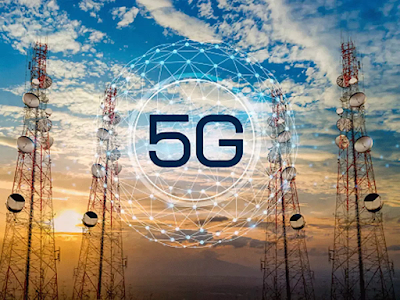The fifth generation of mobile networks, commonly known as 5G, is
poised to revolutionize the way we connect and communicate. With its
unprecedented speed, ultra-low latency, massive device connectivity, and the
potential to enable transformative technologies, 5G holds the key to a future where
everything is connected. In this article, we delve into the world of 5G,
exploring its capabilities, benefits, challenges, and the potential it holds
for various sectors.
The Evolution of
Mobile Networks
To understand the significance of 5G, we must first examine the
evolution of mobile networks. The journey began with 1G, which brought analog
cellular voice to the masses. It was followed by 2G, which introduced digital
voice and limited data capabilities. The subsequent advancements, 3G and 4G,
brought enhanced data speeds and enabled the rise of mobile internet,
multimedia streaming, and app-based services.
The Promises of
5G
5G promises a seismic shift in connectivity and opens doors to
numerous possibilities. With its remarkable speed, reaching up to 10 gigabits
per second, 5G is exponentially faster than its predecessor. This blazing speed
translates into lightning-fast downloads, seamless streaming of 4K and 8K
videos, and near-instantaneous data transfers.
Ultra-Low Latency
and Real-Time Communication
Latency refers to the time it takes for data to travel from the source
to the destination and back. With 5G, latency is reduced to a mere few
milliseconds, enabling real-time communication. This is crucial for
applications that require instantaneous response times, such as remote
surgeries, autonomous vehicles, and augmented reality (AR) and virtual reality
(VR) experiences.
Massive Device
Connectivity and IoT
5G's ability to connect a massive number of devices simultaneously is
a game-changer for the Internet of Things (IoT). IoT encompasses a network of
interconnected devices that communicate and share data, enabling automation,
efficiency, and improved quality of life. With 5G, the IoT landscape will
witness unprecedented growth, enabling smart cities, smart homes, smart
industries, and a plethora of innovative applications.
Transformative
Applications and Industries
The advent of 5G will revolutionize numerous industries, bringing
forth transformative applications. The healthcare sector will benefit from
remote patient monitoring, telemedicine, and improved emergency services. Smart
cities will utilize 5G's capabilities for intelligent traffic management,
energy optimization, and enhanced public safety. Industries such as
manufacturing, logistics, and agriculture will harness 5G to improve
efficiency, productivity, and automation.
Challenges and
Considerations
Despite its potential, 5G deployment faces certain challenges and
considerations. One of the primary concerns is the infrastructure required to
support 5G networks. The deployment of small cells, fiber optic networks, and
advanced antenna systems is necessary for optimal coverage and performance.
Additionally, ensuring cybersecurity and data privacy is paramount, as the
increased connectivity and interconnectivity could expose vulnerabilities if
not adequately addressed.
Global Adoption
and Implementation
Countries worldwide are actively investing in 5G infrastructure to harness its potential. South Korea, the United States, China, and several European nations are leading the race in 5G deployment. Governments, telecommunications companies, and tech giants are collaborating to build robust networks, develop standards, and explore use cases to fully exploit 5G's capabilities. The global rollout of 5G is expected to continue at a rapid
Enhanced Mobile
Broadband
5G's superior bandwidth capabilities allow for a significant
improvement in mobile broadband services. Users can enjoy faster and more
reliable internet connections, even in densely populated areas or during peak
usage times. This opens up opportunities for high-quality video streaming,
immersive gaming experiences, and seamless cloud computing on mobile devices.
Industry 4.0 and
Smart Manufacturing
The integration of 5G in the manufacturing industry paves the way for Industry 4.0, characterized by automation, robotics, and advanced data analytics. With ultra-reliable low-latency communication (URLLC) offered by 5G, industrial processes can be optimized, predictive maintenance can be implemented, and real-time monitoring and control of machinery can be achieved, leading to increased productivity and cost efficiency.
The advent of 5G network technology marks a significant leap forward in connectivity, promising to revolutionize the way we interact with the world around us.
With its unparalleled speed, ultra-low latency, massive device connectivity, and transformative potential, 5G opens up a realm of possibilities across various sectors.
The capabilities of 5G, such as blazing-fast download speeds, real-time communication, and seamless connectivity, will enhance our digital experiences, enabling high-quality streaming, immersive AR/VR applications, and instantaneous data transfers.
Moreover, the ultra-low latency of 5G will pave the way for groundbreaking advancements in fields like telemedicine, autonomous vehicles, and IoT, improving efficiency, productivity, and quality of life.
Written by: Manish Kumar










0 Comments